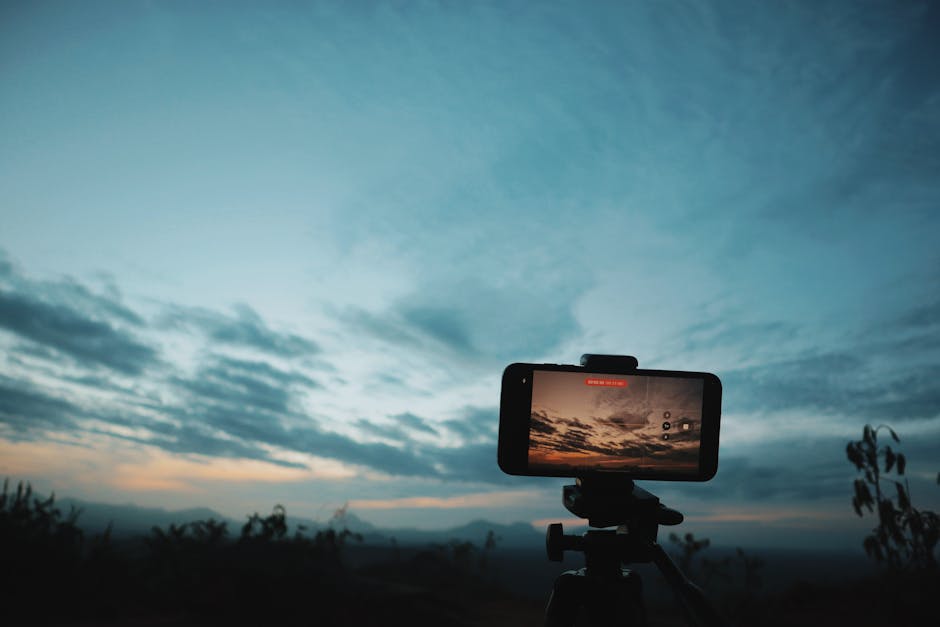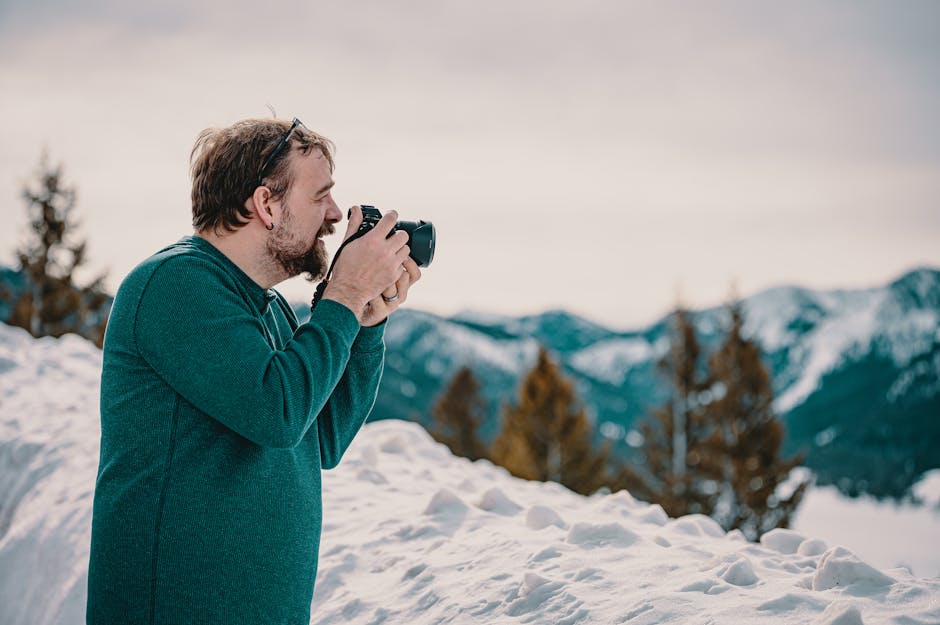Mastering Composition: Tips for Capturing Stunning Travel Photos
Travel photography captures the essence of a place, its culture, and the emotions it evokes. Capturing stunning travel photos isn't just about pointing the camera at a beautiful location. It requires a keen understanding of composition, lighting, and perspective. Proper composition helps guide the viewer's eyes through an image and can dramatically improve the impact of your photos, making them more engaging and visually appealing.

Whether you're using a smartphone or a high-end DSLR, mastering composition is crucial for travel photographers at any level. The basic principles remain consistent across devices and can transform ordinary shots into extraordinary ones. By paying attention to elements such as framing, leading lines, and symmetry, you can create more balanced and interesting images that resonate with viewers.
Rule of Thirds
The rule of thirds is one of the most fundamental composition techniques in photography. It involves dividing your frame into nine equal parts by two horizontal and two vertical lines. The idea is to place key elements along these lines or at their intersections to create balance and draw attention to certain areas. When shooting landscapes or street scenes, for example, placing the horizon along one of these lines rather than in the middle of the frame often leads to a more dynamic image.
Most modern cameras and smartphones have a grid option that overlays these lines on your screen, making it easier to apply this technique in real-time. While it's a simple concept, it can drastically improve your photo compositions by preventing everything from being centered.
Leading Lines
Another powerful tool in your composition arsenal is the use of leading lines. These are natural or man-made lines within a scene that guide the viewer's eye toward a focal point in your image. Leading lines can be found almost anywhere: streets, rivers, railways, or even shadows can serve this purpose. For example, when photographing architecture, using the lines from buildings or staircases can create depth and add structure to your shots.
When used effectively, leading lines not only make your images more visually interesting but also help create a narrative flow within the photograph by directing attention toward key aspects of your scene.
Framing Your Subject
Framing is another excellent way to draw attention to your subject while adding depth to your images. This technique involves using elements within the environment (such as doorways, windows, arches, or even trees) to frame your main subject. This helps isolate the subject from distractions in the background and creates a natural border that emphasizes what's important in the shot.
- Look for natural frames like tree branches or rock formations when photographing landscapes.
- In urban settings, doorways or windows work well as frames for people or architectural details.
This method works particularly well when you want to focus on a specific part of a scene while still giving context to its surroundings.
Symmetry and Patterns
Symmetry can be incredibly pleasing to the eye when done right. Whether it's a perfectly aligned building or a reflection on water, symmetrical compositions often evoke a sense of harmony and balance. Similarly, patterns (whether they occur naturally or are man-made) can add repetition that creates rhythm in an image.
Symmetry doesn't always have to be perfect for it to be effective. Sometimes breaking symmetry by introducing an element that's slightly out of place adds interest and tension to the photo. For instance, if you're photographing an ornate tile floor with repeating patterns, placing an object like shoes or bags off-center breaks up the uniformity in an aesthetically pleasing way.
Using Negative Space
Negative space refers to areas in an image where there is little or no detail (usually empty sky, water, or blank walls) that allow your subject to stand out more prominently. By giving your subject plenty of breathing room within the frame, you can create minimalist photos that emphasize simplicity and focus on details.
This technique is especially effective when photographing iconic landmarks or subjects that benefit from isolation within their environment. Negative space provides balance without overwhelming the viewer with too many competing elements.
Mastering composition takes time but is essential for capturing travel photos that truly stand out. Using techniques like the rule of thirds, leading lines, framing subjects, exploring symmetry, and incorporating negative space allows you to transform everyday scenes into compelling visual stories. With practice and attention to detail, these methods can become second nature, enabling you to consistently produce stunning photographs wherever your travels take you.
Leveraging Social Media to Amplify Your Travel Photography

As travel photography continues to grow in popularity, social media has become an indispensable tool for sharing your work, building a following, and even monetizing your passion. While mastering the technical aspects of photography is crucial, equally important is knowing how to use platforms like Instagram, Facebook, and Pinterest to showcase your talent to a broader audience. Below are some strategies that can help you effectively leverage social media for amplifying your travel photography.
Choose the Right Platforms
Each social media platform has its strengths, and not all of them may be suitable for your style of photography or goals. For example, Instagram is highly visual and allows you to create a portfolio-like feed of images, while Pinterest can drive long-term traffic to your photography blog or website due to its search functionality. Here’s a brief overview of popular platforms for photographers:
- Instagram: Best for daily engagement and growing a loyal audience through visually captivating posts and Stories.
- Pinterest: Excellent for long-term visibility and driving traffic to external websites or blogs where you may host higher-resolution images or tutorials.
- Facebook: Ideal for connecting with travel-related communities or groups where you can share your content and engage in meaningful discussions.
- 500px: A platform specifically tailored to photographers where professionals and amateurs alike share high-quality images.
Build an Engaging Visual Brand
Your social media presence is an extension of your work as a photographer, so it’s important to think about how your feed looks as a whole. Having a cohesive aesthetic not only makes your profile more visually appealing but also makes it easier for viewers to recognize your unique style. Consider aspects such as color schemes, filters, and consistent framing techniques to establish a distinct visual identity.
You might also decide on specific themes for certain days or weeks (such as “architecture Mondays” or “sunset Sundays”) to give your followers something to look forward to. By planning your content in advance with these themes in mind, you'll create anticipation while making it easier for you to manage your posting schedule.
Engage With Your Audience
Social media is not just about broadcasting your work; it's also about building relationships with people who appreciate what you do. Engaging with your audience by responding to comments, answering questions, and sharing insights into how you captured specific shots can help foster a sense of community around your work. Creating interactive posts (like polls or question stickers on Instagram Stories) can further increase engagement by giving people a reason to interact with you beyond just liking or commenting on a photo.
An additional tip is to connect with fellow travel photographers or influencers within the niche. Collaborating on projects, engaging in shout-outs, or even attending photo walks together can boost visibility for both parties involved. Networking is key in building credibility and expanding your reach.
Use Hashtags Effectively
The right hashtags can significantly extend the reach of your photos beyond your immediate followers by making them discoverable through searches. While it's tempting to overload posts with generic hashtags like #travel or #photography, using niche-specific tags can lead to better results by targeting users who are genuinely interested in the type of photography you're sharing.
- Research popular hashtags within the travel photography community such as #TravelPhotographyTips or #WanderlustPhotography.
- Create custom hashtags unique to your personal brand (#YourNameTravels) so people can follow along more easily.
- Vary the types of hashtags you use based on location (#ParisPhotos), season (#WinterWonderland), or specific genres (#StreetPhotography).
Monetize Through Social Media
If you're serious about turning travel photography into more than just a hobby, monetizing through social media is a viable option. Many brands seek out photographers who have a strong online presence and authentic engagement metrics. Once you’ve built an audience that trusts your work and voice, opportunities such as sponsored posts, collaborations with travel agencies, or selling digital products (like Lightroom presets) can provide income streams.
You could also use platforms like Patreon where supporters contribute monthly payments in exchange for exclusive content such as behind-the-scenes tutorials or high-resolution downloads of certain photos. Additionally, affiliate marketing (where you earn commissions from products linked in your posts) can be another way to generate income without compromising artistic integrity.
Social Media Strategy
When using social media for travel photography remember balance = producing high-quality content while engaging meaningfully with an audience that's passionate about travel and culture. Leveraging the right platforms strategically will allow you not only to share breathtaking visuals but also to build a loyal following that appreciates the art behind each photograph.
If approached thoughtfully, social media can be much more than just an outlet for sharing; it can serve as a dynamic portfolio that opens doors to collaborations, growth opportunities, and even financial rewards for those willing to invest time and creativity into their presence.